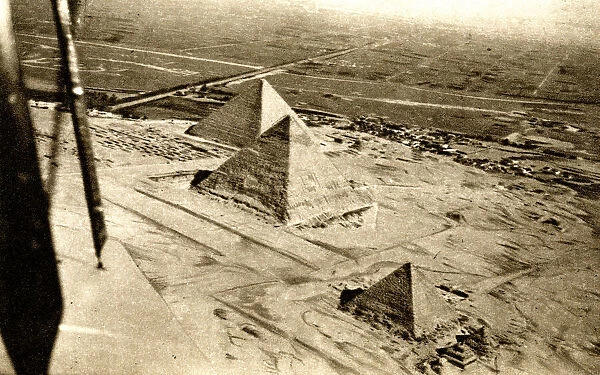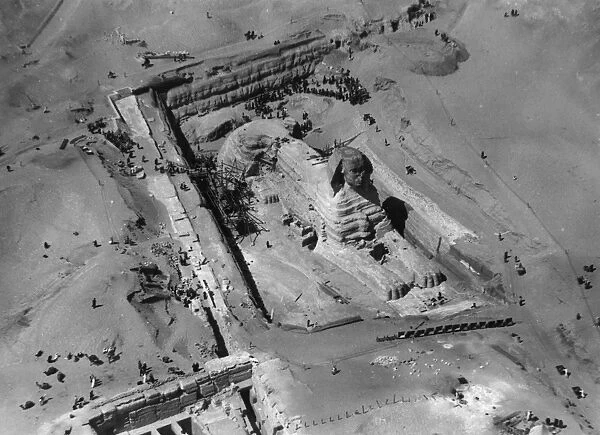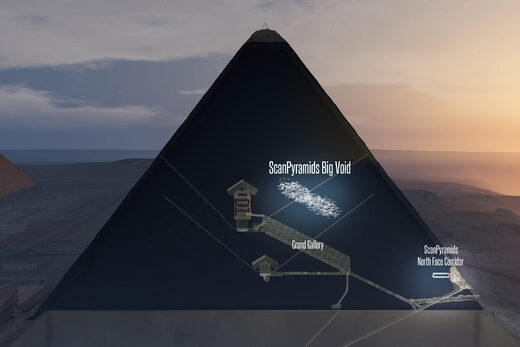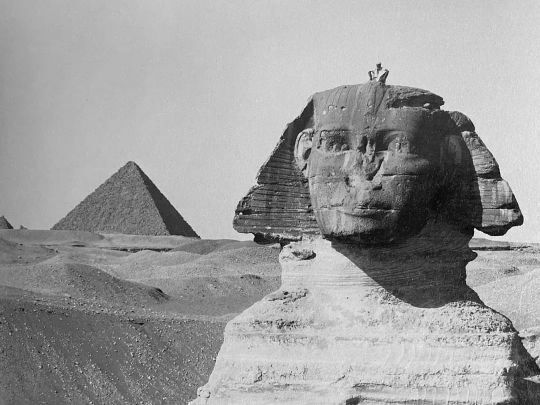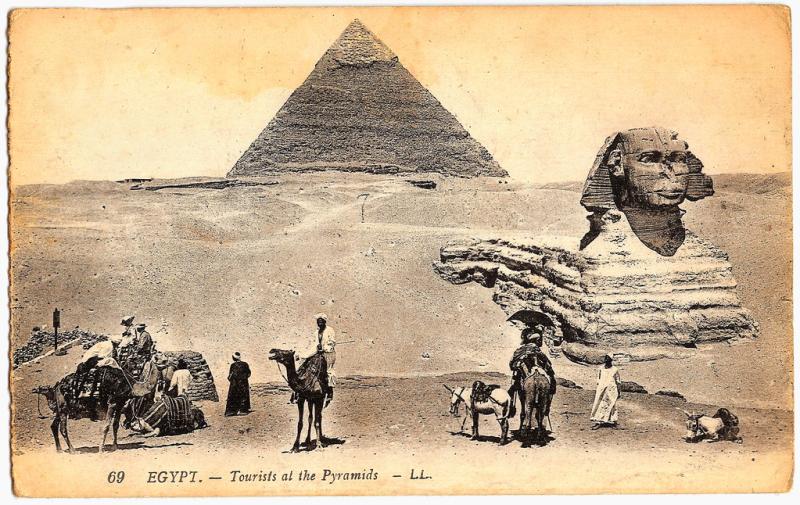
#Egypt - The #Great #Sphinx. And the Great #Pyramid of #Giza.
The Postcard
A postally unused carte postale that was published by L.L. The card has a divided back.
The Great Sphinx of Giza
The Great Sphinx of Giza is a limestone statue of a reclining sphinx, a mythical creature with the head of a human, and the body of a lion.
Facing directly from west to east, it stands on the Giza Plateau on the west bank of the Nile. The face of the Sphinx appears to represent the pharaoh Khafre.
The original shape of the Sphinx was cut from the bedrock, and has since been restored with layers of limestone blocks.
It measures 73 m (240 ft) long from paw to tail, 20 m (66 ft) high from the base to the top of the head, and 19 m (62 ft) wide at its rear haunches.
Its nose was broken off for unknown reasons between the 3rd. and 10th. centuries AD.
The Sphinx is the oldest known monumental sculpture in Egypt, and one of the most recognisable statues in the world.
The archaeological evidence suggests that it was created by ancient Egyptians of the Old Kingdom during the reign of Khafre (c. 2558 - 2532 BC).
The Great Sphinx's Name
The commonly used name "Sphinx" was given to the monument in classical antiquity, about 2,000 years after the commonly accepted date of its construction by reference to a Greek mythological beast with the head of a woman, a falcon, a cat, or a sheep and the body of a lion with the wings of an eagle. (Although, like most Egyptian sphinxes, the Great Sphinx has a man's head and no wings).
The English word sphinx comes from the ancient Greek Σφίγξ from the verb σφίγγω (meaning to squeeze in English), after the Greek sphinx who strangled anyone who failed to answer her riddle.
History of the Great Sphinx
The Sphinx is a monolith carved from the bedrock of the plateau, which also served as the quarry for the pyramids and other monuments in the area.
Egyptian geologist Farouk El-Baz has suggested that the head of the Sphinx may have been carved first, out of a natural yardang, i.e. a ridge of bedrock that had been sculpted by the wind. These can sometimes achieve shapes which resemble animals.
El-Baz suggests that the "moat" or "ditch" around the Sphinx may have been quarried out later to allow for the creation of the full body of the sculpture.
The archaeological evidence suggests that the Great Sphinx was created around 2500 BC for the pharaoh Khafre, the builder of the Second Pyramid at Giza. The stones cut from around the Sphinx's body were used to construct a temple in front of it.
However, neither the enclosure nor the temple were ever completed, and the relative scarcity of Old Kingdom cultural material suggests that a Sphinx cult was not established at the time.
https://www.flickr.com/photos/november_song/52198071220
